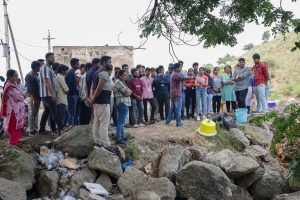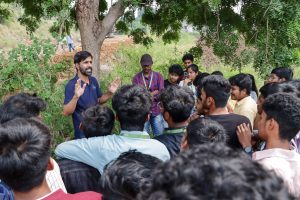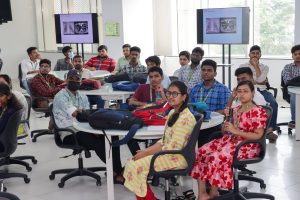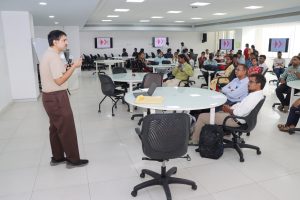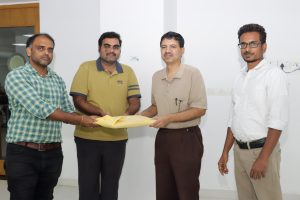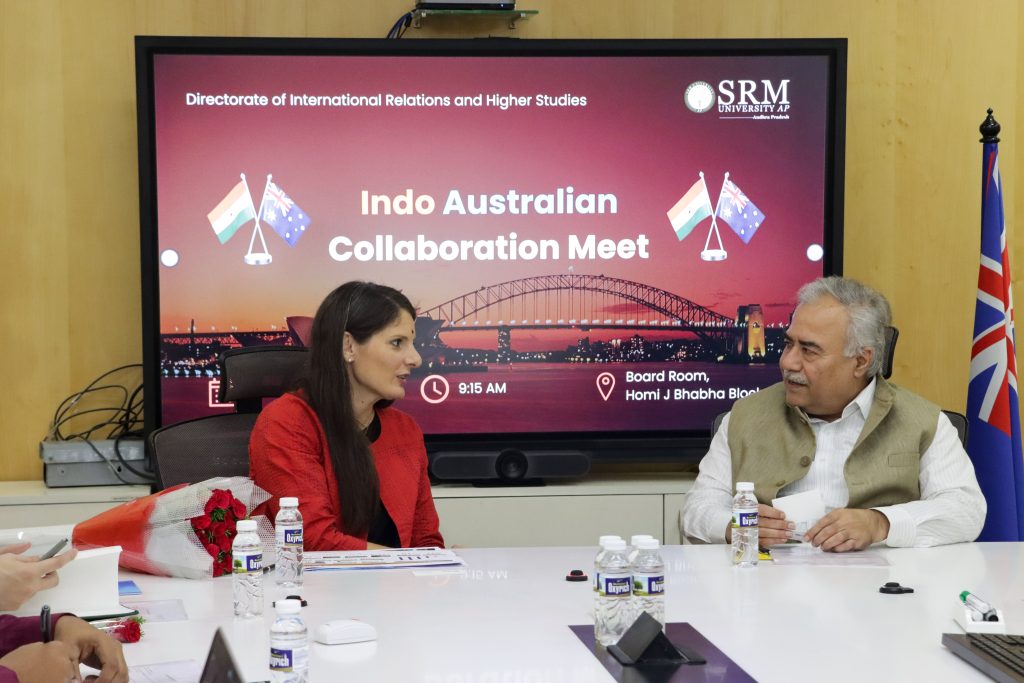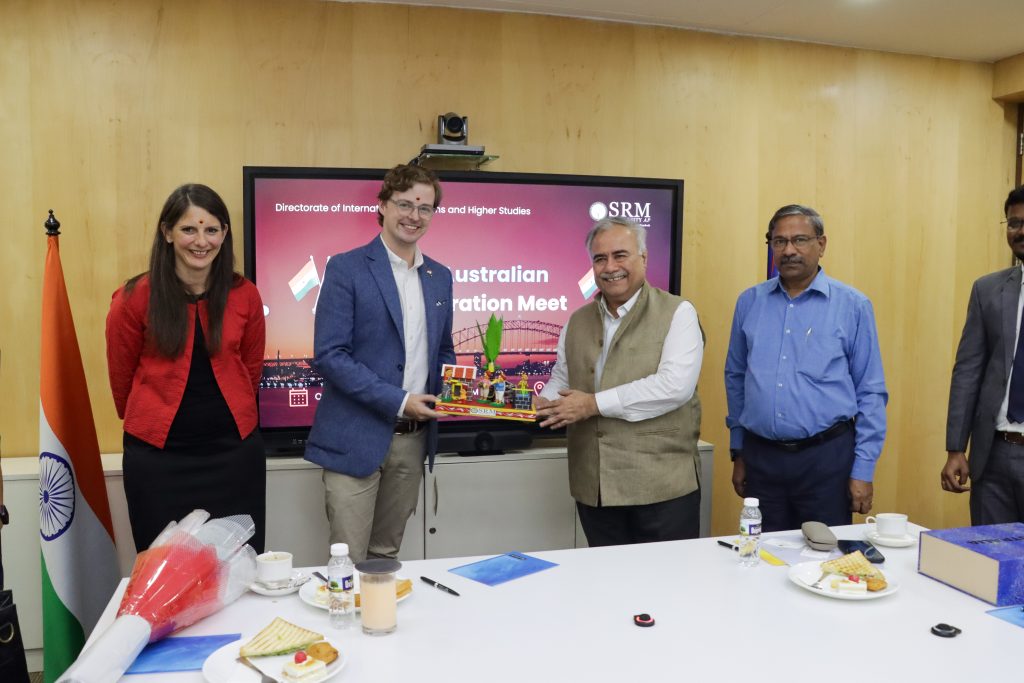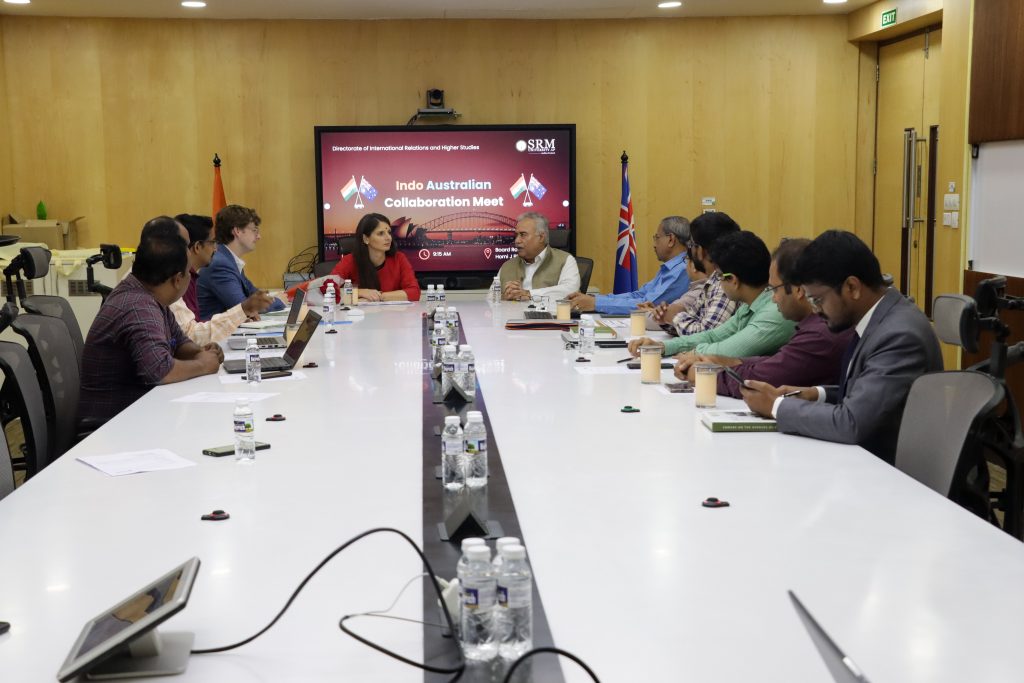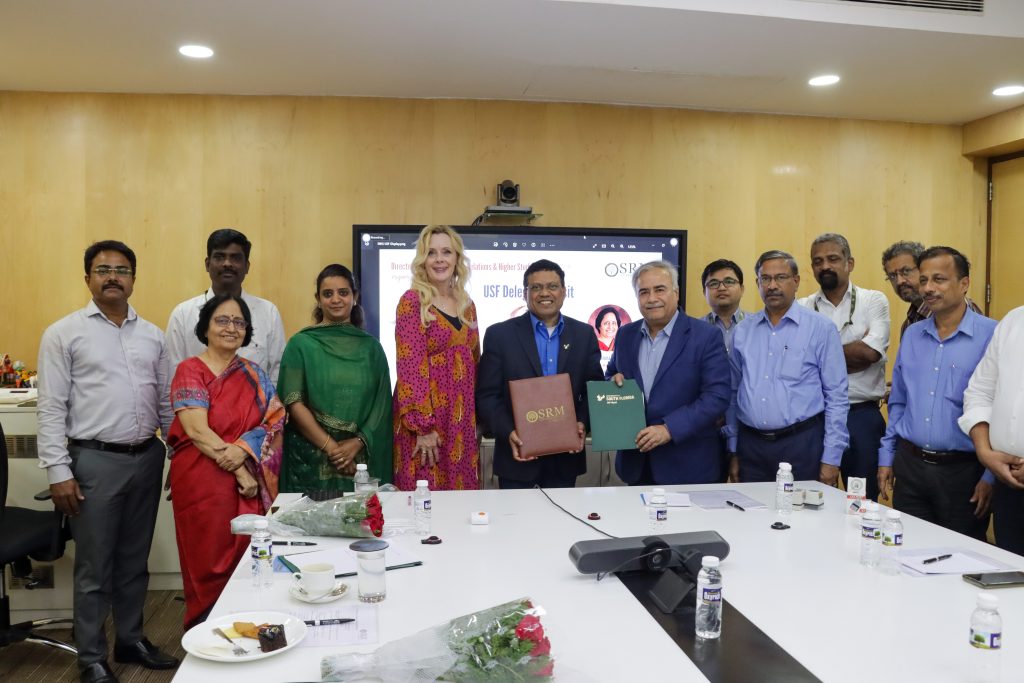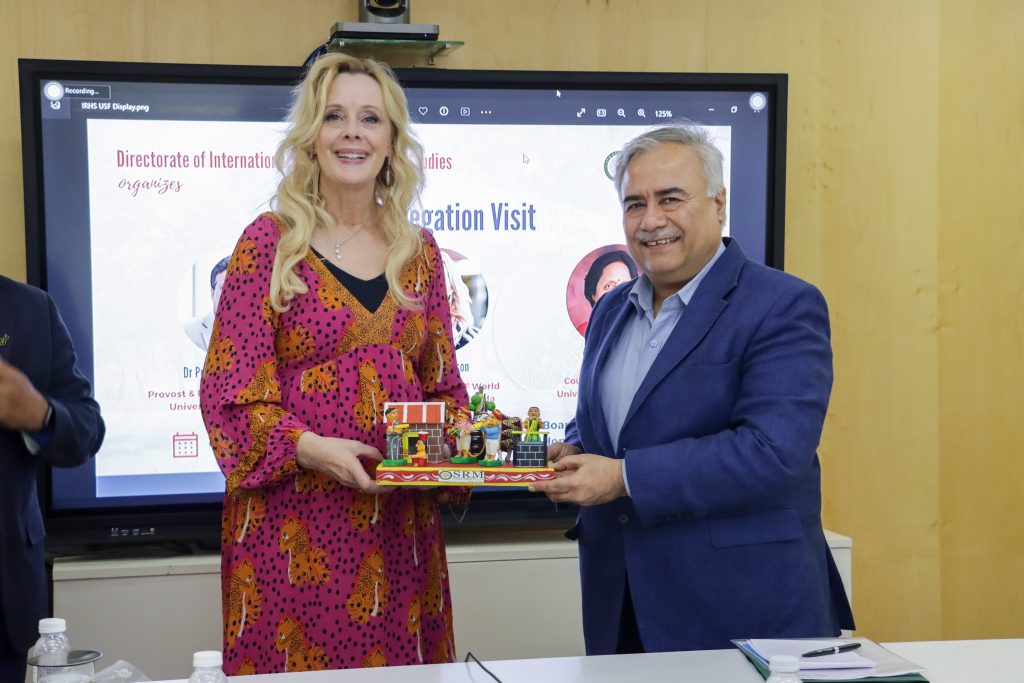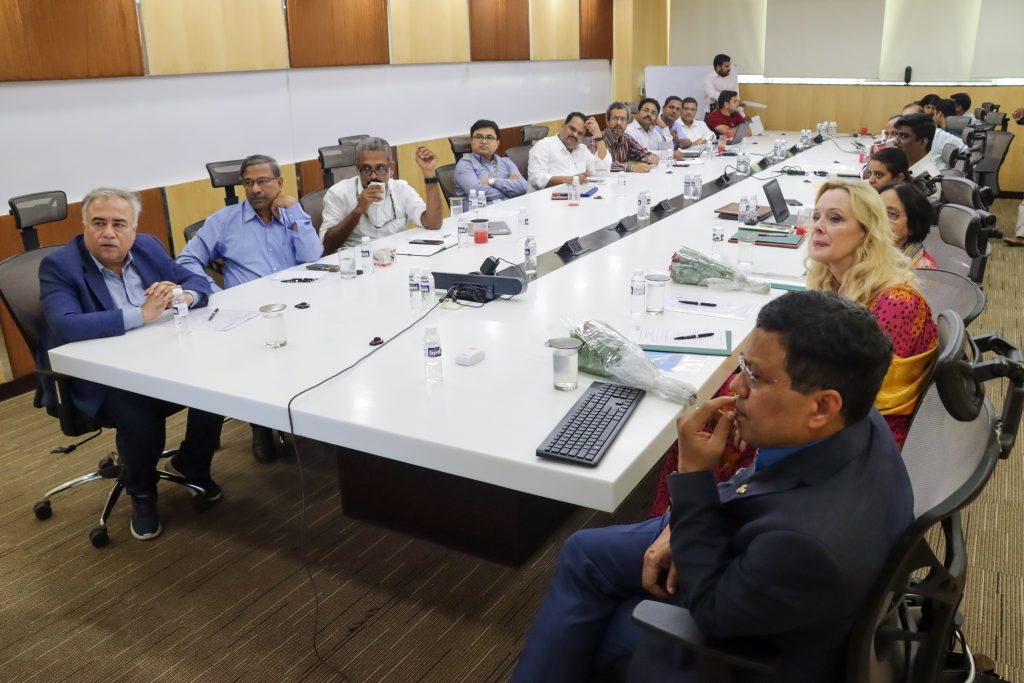Field Visit for Environmental Awareness
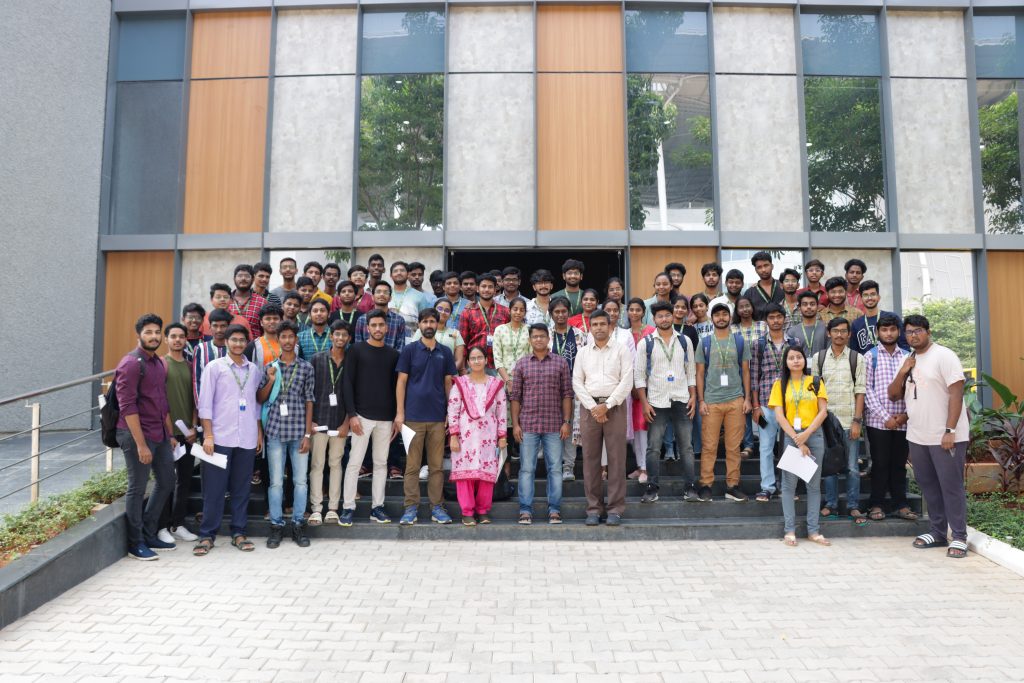
The Department of Environmental Science and Engineering organised a field visit for first-year odd semester students as a part of their Environmental Science course (VAC-101) from October 16-20, 2023 around the vicinity of SRM University-AP campus. The students were made aware of the surrounding land-uses, their biodiversity, impacts and importance to the environment. Observations were made on different threats like pollution, plant invasion, fertilizer run-off, etc. and the students were explained what can be done as an individual and as a community to protect our resources. Practical know-hows on vegetation and water sampling were also demonstrated by different faculty members. The students returned with a heightened sense of stewardship towards environmental protection.
- Published in Departmental News, ENVS News, News
Prof. Naik Expounds on the Future of Biomedical Imaging
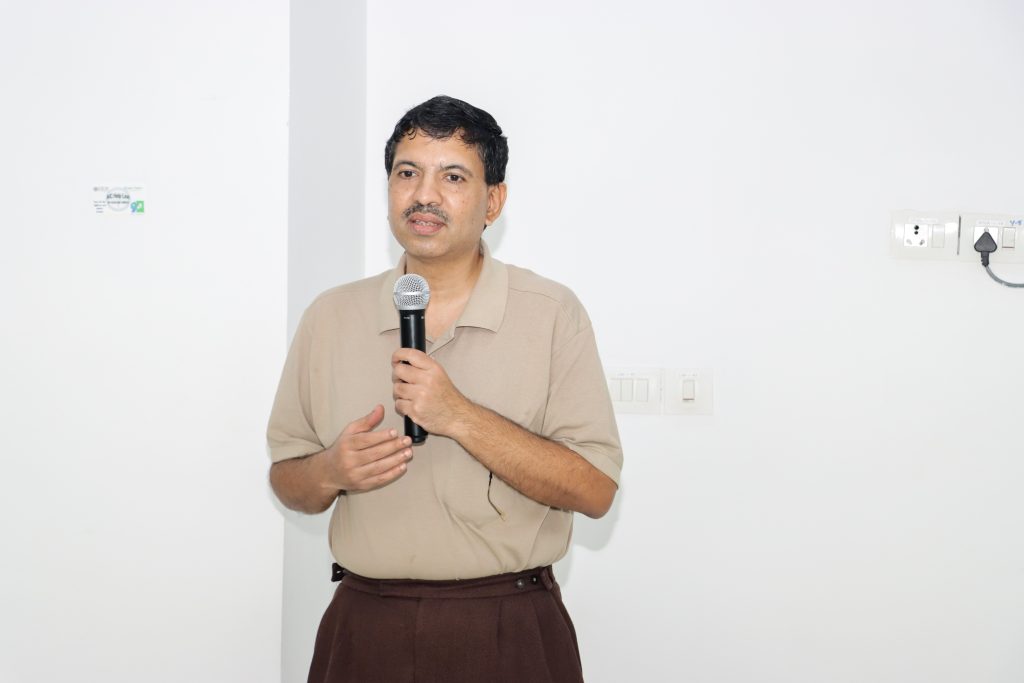
The Department of Electronics and Communication Engineering hosted an Invited Talk on “Dynamic Shape-based Biomedical Tomographic Reconstruction Algorithms” by Prof. Naren Naik, IIT Kanpur on October 30, 2023. Prof. Naren Naik, a well-acclaimed researcher and specialist in tomography reconstruction algorithms discussed extensively on tomographic problem definition and formulation, shape reconstructions, shape-tomography based on radial basis functions (RBF), and the diagnosis of early-stage cancer using tomography. He also explored replacing nuclear medicine modalities with optical fluorescence methods, especially in applications like early cancer detection and metabolic imaging. Additionally, the presentation delved into nonlinear-reconstruction frameworks for fluorescence optical tomography.
Faculty, Research scholars and BTech students from various departments participated in this insightful session. The event was organised by Assistant Professor, Dr V Sateeshkrishna Dhuli of the Department of Electronics and Communication Engineering, SRM University-AP.
- Published in Departmental News, ECE NEWS, News
SRM AP Hosts Australian Delegation for Collaborative Initiatives
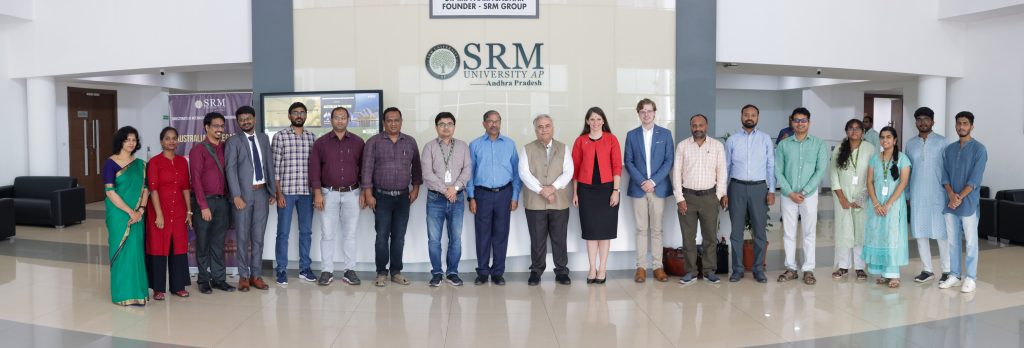
SRM University-AP played host to a dynamic and visionary Indo-Australian Collaboration Meet aimed at fostering academic partnerships and research collaborations between the two nations. The event featured a delegation led by H.E. Sarah Kirle, the Australian Consulate General. It occurred in the esteemed presence of Vice Chancellor Prof. Manoj K Arora and Registrar Dr R. Premkumar.
The Collaboration provided a platform for fruitful discussions and exploring potential collaborative initiatives between educational institutions in India and Australia. The discussions centred around ways to promote the exchange of knowledge, faculty and students, as well as joint research initiatives and cultural programs. Both parties expressed their commitment to developing academic exchange programmes that would allow students and faculty to gain a deeper understanding of each other’s cultures and educational environments. The meeting identified potential research areas where Australian institutions and SRM University-AP could work together to address global challenges and significantly contribute to the respective fields.
The panel featured discussions and brainstorming sessions, with research taking centre stage. The parties deliberated on developing a framework for collaborative research projects, which would encourage knowledge exchange and innovative solutions to global challenges. Discussions revolved around student and faculty exchange programmes, fellowship, and scholarship opportunities that would promote cross-cultural understanding and enrich the educational experience.
The visit served as a significant step in fostering relationships between SRM University-AP and Australian institutions, with the shared goal of promoting global education and research. It will signify a commitment to expanding horizons and offering students a broader and more enriching educational experience.
SRM University-AP Signed MOU with University of South Florida
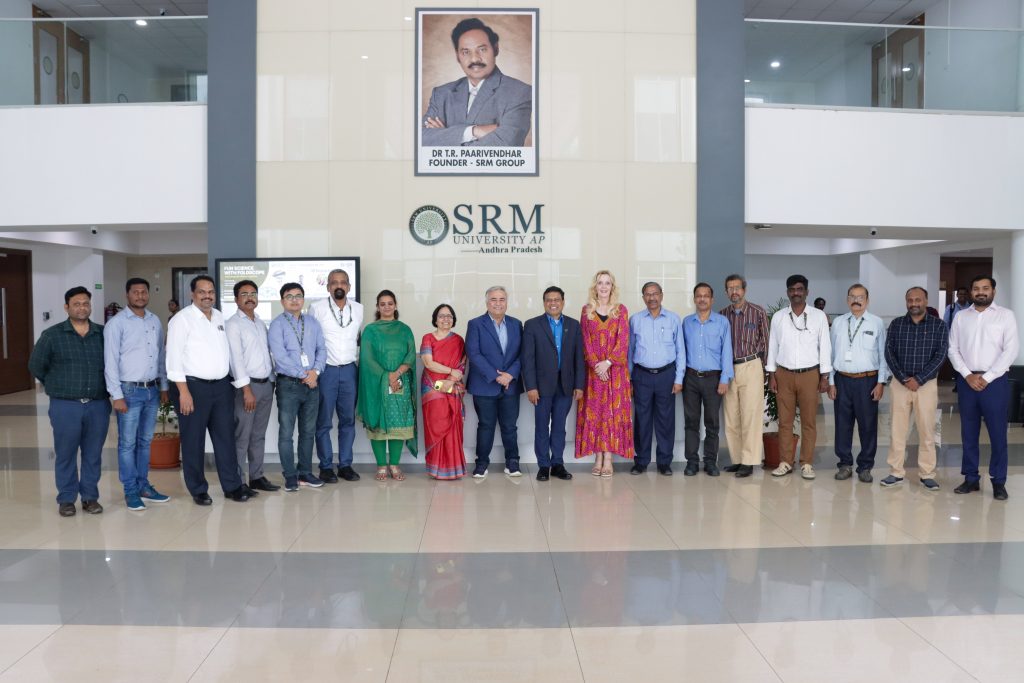
SRM University-AP, Andhra Pradesh, takes a momentous step towards enhancing its global presence and fostering academic collaboration by signing a Memorandum of Understanding (MOU) with the University of South Florida (USF). This historic event took place in the esteemed presence of Prof. Manoj K Arora, Vice Chancellor, SRM University-AP, Dr Prashant Mohapatra, Provost & Executive Vice President of the University of South Florida, along with Dr Kiki Caruson, Vice President, USF.
The MOU hailed as an “umbrella agreement” represents a comprehensive and strategic partnership to promote collaborative research, student exchanges, faculty interactions, and cultural engagement between the two institutions. This MOU will pave the way for academic exchanges, joint research initiatives, and collaborative projects that will enrich the educational experience for students and faculty at both institutions. The partnership seeks to facilitate cultural exchanges, allowing students to gain a broader understanding of global perspectives and fostering an atmosphere of inclusivity and diversity. SRM University-AP students will have the opportunity to experience a truly global education by participating in programs and activities hosted by the University of South Florida. Joint research projects will allow both institutions to tackle complex global challenges and significantly contribute to their respective academic fields.
Dr Prashant Mohapatra emphasised the importance of international collaborations in higher education, stating, “This partnership allows us to combine our strengths and resources for the benefit of our students and faculty. We look forward to the notable opportunities that lie ahead and remark on the potential for impactful research collaborations; by bringing together our expertise and knowledge, we can address global challenges more effectively. This MOU is a testament to our shared commitment to academic excellence.”
Prof. Arora, also expressed his enthusiasm for the collaboration, saying, “This MOU signifies the beginning of a new era in our journey towards global academic excellence. We are thrilled to join hands with the USF, a renowned institution with a strong commitment to innovation and research.” As the academic world evolves, SRM University-AP remains dedicated to providing its students with the best possible opportunities and experiences. The MOU with the University of South Florida is a significant stride in this direction, reinforcing the institution’s commitment to global learning and a brighter future.


